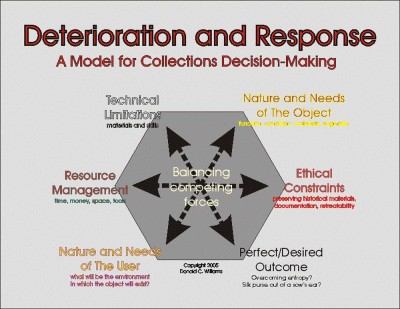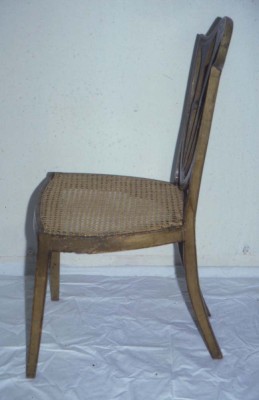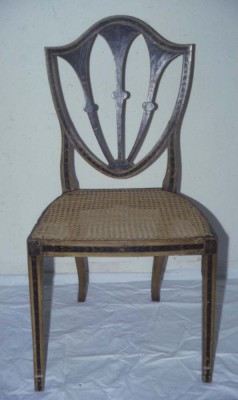Restoring A Pair of Cool Mid-Mod Chairs – Devising the Plan
The approach to solving the problem afflicting these two chairs highlights a method for decision-making about artifact care that I derived more than twenty years ago, a model that has served me without fail ever since I established its framework. It is a method by which I self-consciously attempt to balance the all the stakeholders in the drama: the chair itself, historical integrity, the user and their needs, and the possibilities and limitations of reality.
I use this graphical representation to help remind me in steering my thinking. (You can download a printable version of this here).
In this case I was faced with a well-artistically-designed piece of furniture that could no longer function properly, primarily I believe due to ill-advised fabrication. If it was merely a prototype to demonstrate a form that never made it to production, or some other reason (as near as I can tell it never did make it into production), the fact is that it has become a treasured albeit utilitarian object whose dual purposes are to 1) look beautiful, and 2) keep the occupant off the floor, comfortably.
As I said earlier there was simply no way to disassemble the chair to get to the offending element without inflicting catastrophic damage on the chair, so that was out of the question.
In the end I decided on a path analogous to a treatment I had devised and executed two decades ago for a cane bottomed painted chair from around 1800. The side seat rail had been broken and repaired numerous times, and since the structure was both visible and hopelessly compromised, AND it could not be disassembled to enact the compensation needed, my fundamental commitment to the historical integrity of the piece — i.e. keeping the original fabric entirely intact and leaving it as unchanged as possible — had to be considered and reconsidered a great length.
For the c.1800 painted chair I settled on excavating the underside of the seat rail and inserting and unobtrusive spine into the broken element in order to make it function properly (the chair was one of a set that was still used on a daily basis). It worked perfectly.
With the confidence of that successful project, for this pair of chairs I decided to do much the same thing. The underside of the primary cross-member that had suffered complete failure and collapse from the stresses exceeding its functionality, and need to be reinforced with a stout and robust new element. In this case I determined that the element needed to be a piece of metal bar stock, and the embedding material was to be epoxy.
Next time I will walk you through the execution of the treatment.








Join the Conversation!